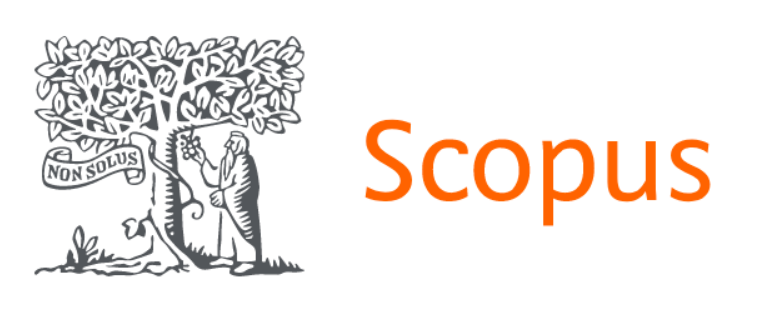SUSTAINABLE BLOCKCHAIN MODELS: A COMPARATIVE LIFE CYCLE ASSESSMENT OF PROOF OF WORK AND PROOF OF SPACE AND TIME
DOI:
https://doi.org/10.18623/rvd.v22.n4.3690Keywords:
Proof of Work, Proof of Space and Time, Blockchain Sustainability, Cryptocurrency Farming, Environmental InformaticsAbstract
The study investigates the environmental, economic, and educational dimensions of blockchain consensus mechanisms, focusing on a comparative analysis between Proof of Work (PoW) and Proof of Space and Time (PoST). Using an experimental mixed-methods approach, the research combines empirical energy consumption measurements, life cycle assessment (LCA), and economic modeling to evaluate sustainability performance. Results demonstrate that PoST reduces energy consumption by approximately 90–95% and decreases CO₂ emissions by up to 93% compared to PoW, while maintaining network decentralization and security. Although PoST shifts part of the ecological burden from operational energy use to hardware production and disposal, its overall life cycle impact remains significantly lower. The findings confirm PoST’s potential as a viable alternative for sustainable blockchain development and align with the principles of the EU Green Deal and ESG frameworks. Furthermore, the study highlights the didactic value of cryptocurrency farming for interdisciplinary education in informatics, economics, and environmental sciences, emphasizing the role of universities in fostering responsible technological innovation.
References
[1] Tapscott, D., & Tapscott, A. (2016). Blockchain Revolution: How the Technology Behind Bitcoin and Other Cryptocurrencies Is Changing the World. London: Penguin Books.
[2] Nakamoto, S. (2008). Bitcoin: A Peer-to-Peer Electronic Cash System. Retrieved from https://bitcoin.org/bitcoin.pdf
[3] de Vries, A. (2018). Bitcoin’s growing energy problem. Joule, 2(5), 801–805.
[4] Sedlmeir, J., Buhl, H., Fridgen, G., & Keller, R. (2020). The energy consumption of blockchain technology: Beyond myth. Business & Information Systems Engineering, 62(6), 599–608. https://doi.org/10.1007/s12599-020-00656-x
[5] Chen, L., Xu, L., Shah, N., et al. (2022). Sustainable blockchain and renewable energy integration. Energy Reports, 8, 451–469.
[6] European Environment Agency. (2025). Green Datacenters and Circular IT. Copenhagen: EEA.
[7] Stoll, C., Klaaßen, L., & Gallersdörfer, U. (2019). The carbon footprint of Bitcoin. Joule, 3(7), 1647–1661.
[8] International Energy Agency. (2024). Global Critical Minerals Outlook. Paris: IEA.
[9] Cambridge Centre for Alternative Finance. (2024). Cambridge Bitcoin Electricity Consumption Index (CBECI). Cambridge University. Retrieved from https://ccaf.io/cbeci
[10] Krause, M., & Tolaymat, T. (2018). Quantification of energy and carbon costs for mining cryptocurrencies. Nature Sustainability, 1(11), 711–718. https://doi.org/10.1038/s41893-018-0152-7
[11] Chen, D., Huang, X., et al. (2024). Blockchain and energy load balancing in smart grids. Renewable Energy, 221, 1254–1270.
[12] European Parliament and Council. (2024). Markets in Crypto-Assets Regulation (MiCA). Brussels: European Union.
[13] World Bank. (2023). Minerals for Climate Action: The Mineral Intensity of the Clean Energy Transition. Washington, DC: World Bank.
[14] European Commission. (2019). The European Green Deal. Brussels: European Commission.
[15] European Commission. (2023). EU Taxonomy for Sustainable Activities. Brussels: European Commission.
[16] European Environment Agency. (2023). CO₂ Emissions from Passenger Cars in the EU. Copenhagen: EEA.
[17] Cohen, B. (2021). Chia Network Whitepaper: Proof of Space and Time. San Francisco: Chia Network Inc.
[18] Subspace Labs. (2024). Proof of Storage and Stake Mechanism Whitepaper. Retrieved from https://subspace.network
[19] Seagate Technology LLC. (2023). SSD Endurance and Reliability in Write-Intensive Applications. Cupertino: Seagate Technology. Retrieved from https://www.seagate.com/resources/white-papers/ssd-endurance-and-reliability
[20] Sommier, M. (2022). Transformative, interdisciplinary and intercultural learning for sustainable development in higher education. Environment, Development and Sustainability, 24(10), 12297–12318. https://doi.org/10.1007/s10668-022-02208-7
[21] Klimova, B. (2023). Ethical issues of the use of AI-driven mobile apps for education: A systematic review. Education and Information Technologies, 28, 12013–12028. https://doi.org/10.1007/s10639-023-11624-3
[22] European Commission. (2022). DigComp 2.2 – The European Digital Competence Framework for Citizens. Brussels: European Commission.
[23] Cardano Foundation. (2024). Sustainability Report 2024: Towards a Carbon-Neutral Blockchain. Zürich: Cardano Foundation.
[24] Qarnot Computing. (2023). Reusing Heat from Computing: Sustainable Datacenter Models. Paris: Qarnot Computing.
[25] Heatbit Inc. (2024). Turning Mining Heat into Home Energy. Retrieved from https://heatbit.com
[26] European Commission. (2024). Digital Product Passport: A Tool for Circular Economy. Brussels: European Commission.
[27] Malý, O. (2023). Farmaření jako ekologičtější varianta těžby kryptoměn. Bachelor’s thesis, University of Hradec Králové, Czech Republic.
[28] OECD. (2025). Green Blockchain Education: Framework for Sustainable Digital Literacy. Paris: OECD.
[29] Malý, O., Hubálovská, M., & Hubálovský, Š. (2024). Mining and farming of cryptocurrencies: Comparison of economic and environmental demands. In Proceedings of the DiVai Conference 2024 (pp. 145–152). Nitra: UKF.
[30] De Angelis, T., et al. (2025). Hybrid consensus protocols for sustainable decentralization. IEEE Transactions on Computers, 74(4).
[31] Kwon, J. K., & Buchman, E. (2022). Cosmos Whitepaper: A Network of Distributed Ledgers. San Francisco: Tendermint Inc. Retrieved from https://cosmos.network/whitepaper
[32] [32] Ethereum Foundation. (2023). Ethereum Energy Consumption After The Merge: Environmental Impact Report 2023. Zürich: Ethereum Foundation. Retrieved from https://ethereum.org/en/energy-consumption
Downloads
Published
How to Cite
Issue
Section
License
I (we) submit this article which is original and unpublished, of my (our) own authorship, to the evaluation of the Veredas do Direito Journal, and agree that the related copyrights will become exclusive property of the Journal, being prohibited any partial or total copy in any other part or other printed or online communication vehicle dissociated from the Veredas do Direito Journal, without the necessary and prior authorization that should be requested in writing to Editor in Chief. I (we) also declare that there is no conflict of interest between the articles theme, the author (s) and enterprises, institutions or individuals.
I (we) recognize that the Veredas do Direito Journal is licensed under a CREATIVE COMMONS LICENSE.
Licença Creative Commons Attribution 3.0







